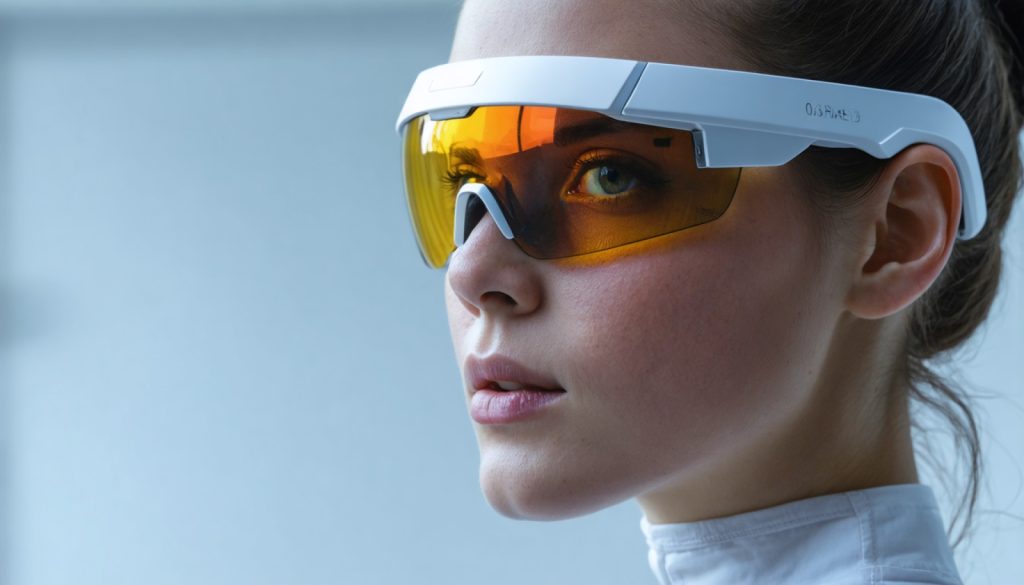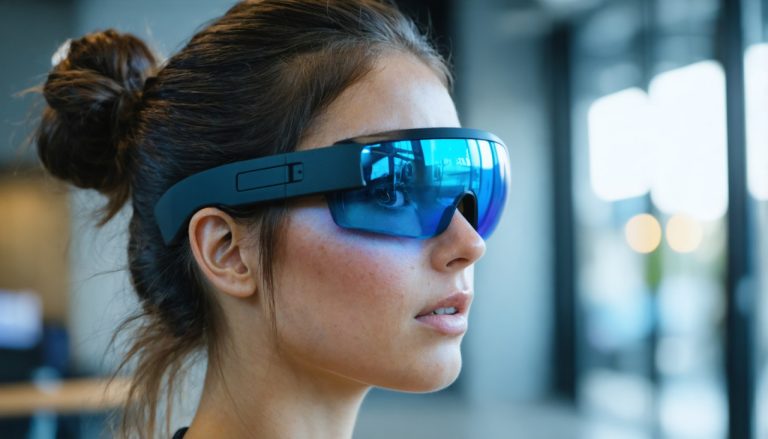
- ENGO 2 AR glasses enhance fitness experiences by projecting live metrics like pace and heart rate into the user’s field of vision.
- At a lightweight 36-41 grams, they target athletic users but may slip due to weight concentration on the nose pad during intense activity.
- The glasses offer potential game-changing advantages, allowing athletes to access real-time data without glancing at wrist devices.
- Challenges include display visibility issues for users with imperfect eyesight and distracting hand gestures to navigate information.
- The fitness industry is a new frontier for AR tech with innovations from Meta, Google, and Samsung pushing the boundaries of sports technology.
- Consumers face a choice between emerging AR solutions and traditional devices like smartwatches, as AR glasses gradually enter mainstream fitness tech.
With each stride, the possibilities of augmented reality (AR) glasses flash across the periphery of modern fitness tech. When wearing ENGO 2 AR glasses, equipped with the capability to project essential running metrics like pace and heart rate directly in the corner of the user’s vision, the future feels tantalizingly close. Yet, the sweaty truth remains—the road to perfection is still a steep climb.
Think about it: these sleek AR specs, feather-light at just 36-41 grams, cater distinctively to athletes. Designed to place minimal weight on the bridge of the nose, their compact form factor outclasses heavier alternatives, like Meta’s Ray-Bans and creative competitors like Xreal One. Nevertheless, this quest for minimalism leads to a fundamental issue. The weight, concentrated primarily on the nose pad, stealthily creeps the glasses downwards with each vigorous movement, obstructing the wearer’s focus and turning much-needed metrics into elusive mirages.
The potential game-changer, however, lies beyond sightseeing. Imagine runners and cyclists empowered by live stats without breaking stride—elevation gains pushing them uphill, heart rate zones nudging them through aerobics to anaerobic peaks. No more risking glances at wrist devices; just real-time data seamlessly interwoven into the runner’s path.
For now, however, reality tempers this vision. The device’s tiny holographic display becomes a blur for less-than-perfect sight, and the cumbersome task of waving hands to cycle through information leads to distraction instead of motivation. The promise is there, visible, like a distant peak on the horizon.
Yet perhaps the most exhilarating revelation is the industry’s collective gaze shifting toward fitness as a transformative frontier for AR tech. Giants like Meta and Google are innovating at unprecedented rates. Meta’s sneak peek Hypernova features a discreet monocle display, synced with intuitive gesture controls. They allure athletes with promises of more dynamic, user-friendly interfaces, hinting at a future where a mere tap brings a full suite of health data into view mid-stride.
Meanwhile, the world watches Samsung and Google’s joint venture, Project Haean, which marries holographic capability with astounding lightness, potentially empowering users with live navigation and health metrics.
So, should you wait for augmented reality to redefine your workout? If you thrive on cutting-edge tech, there’s a high chance you’ll find AR glasses irresistible soon enough. For others, the trusty smartwatch or bike computer still holds ground against the encroaching revolution. But one thing remains clear: we approach a horizon where, with a flick of the eyes, post-modern athletes will curate their performance experience like never before. The question remains—what will drive your pursuit of excellence?
Revolutionizing Fitness with Augmented Reality Glasses: What You Need to Know
Exploring the Future of Fitness Tech with AR
Augmented reality (AR) glasses are set to transform the fitness landscape by providing real-time, hands-free access to vital workout data. One standout model in this emerging field is the ENGO 2 AR glasses, designed for fitness enthusiasts who want metrics like pace and heart rate projected directly in their line of sight. However, while the concept is promising, practical implementation may still need refinement.
Features, Specs, and Pricing of ENGO 2 AR Glasses
ENGO 2 AR glasses are lightweight, ranging from 36 to 41 grams, catering to athletes who value minimalism. Their compact design offers an edge over heavier alternatives such as Meta’s Ray-Bans or Xreal One. Despite their reduced weight, users report that the concentration of weight on the nose pad can occasionally cause the glasses to slip, obstructing vision.
Key Specifications:
– Weight: 36-41 grams
– Display: Holographic projection
– Metrics Displayed: Pace, heart rate, elevation gain
– Controls: Hand gestures
Pricing details for ENGO 2 AR glasses are not widely advertised yet, likely positioned at a premium due to the advanced technology.
Advantages of AR Glasses in Fitness
– Real-Time Data: Access to live stats without distraction from wrist devices.
– User-Friendly Design: Minimal weight and hands-free operation enable focus on the workout.
– Innovation Potential: Industry players like Meta and Google are integrating intuitive gesture controls and enhanced displays.
Challenges and Limitations
– Visual Clarity: The tiny holographic display can blur for some users, requiring perfect eyesight to take full advantage.
– Gesture Controls: Current hand gesture navigation can be cumbersome, causing distractions.
– Fit and Comfort: The weight distribution may lead to slippage during high-intensity workouts.
Industry Trends and Predictions
As tech giants invest in AR, the focus shifts to enhancing user experience through improved interfaces. Meta‘s upcoming Hypernova features a monocle display with sophisticated controls. Samsung and Google‘s Project Haean promises lightweight, holographic displays. These developments signify a commitment to making AR a staple in fitness technology.
Tips for Integrating AR into Your Fitness Routine
1. Prioritize Fit: Ensure a snug fit to prevent slippage while exercising.
2. Test Your Sight: Verify the display’s clarity before investing.
3. Stay Updated: Follow industry developments to gauge when it’s the right time to adopt AR.
4. Combine with Traditional Methods: Initially, pair AR glasses with existing smartwatches to compare metrics.
Conclusion: The Path Forward
For those drawn to cutting-edge innovation, AR glasses are an irresistible prospect for revolutionizing workout experiences. However, traditional devices like smartwatches remain reliable for those not ready to venture into AR just yet. Stay informed about technological advancements, as the horizon of enhanced athletic performance through AR lenses is within reach.
For more information on the latest in technology and AR wearables, visit Meta or Google.



